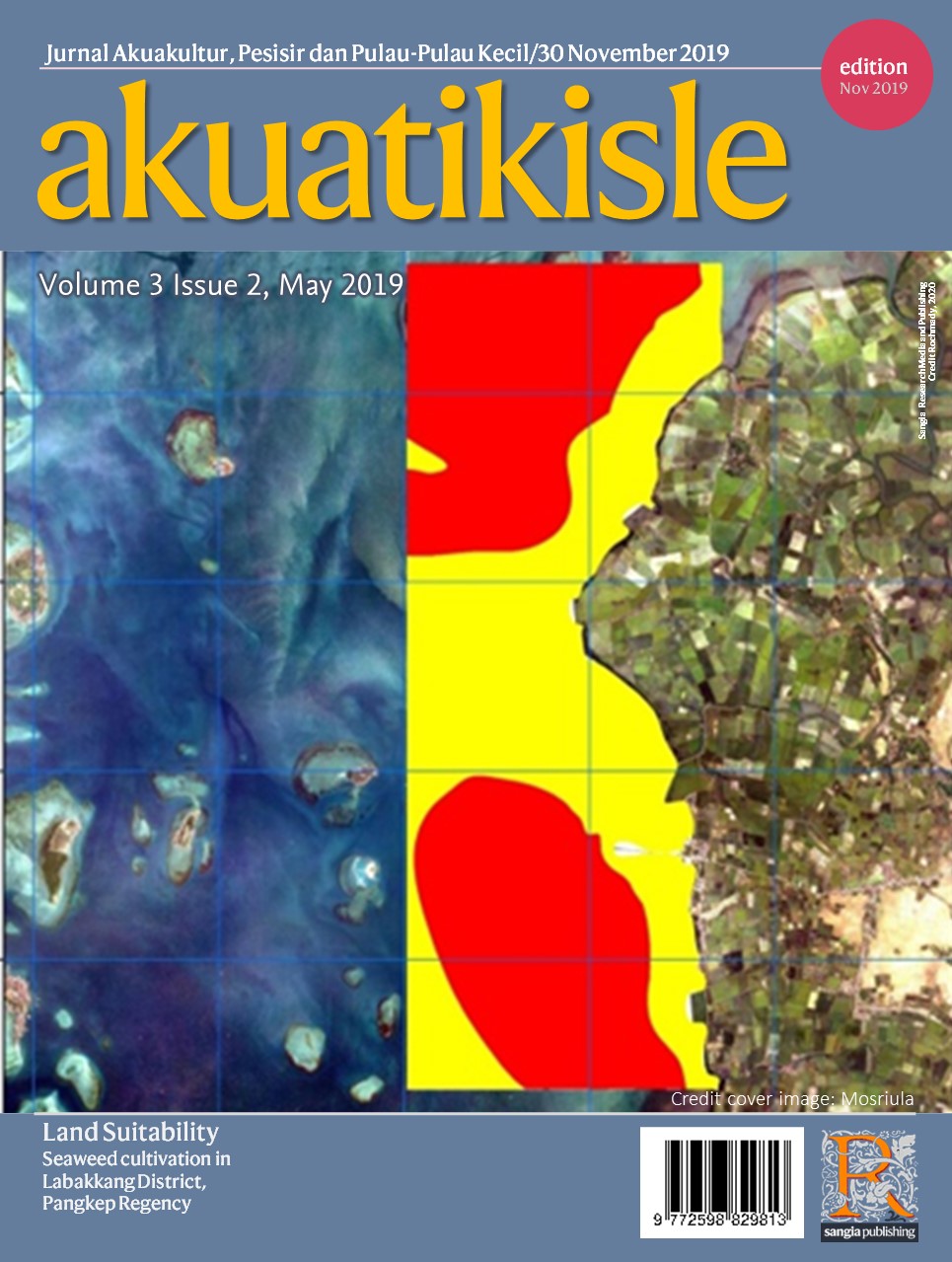Akuatikisle: Jurnal Akuakultur, Pesisir dan Pulau-Pulau Kecil
Full Length Article
Analysis of land suitability, carrying capacity, and development strategies for seaweed cultivation in Labakkang District, Pangkep Regency, Indonesia
Highlights
Generate NLP AI by Wizdam ID.
Abstract
Analysis of land, its carrying capacity and development strategy of seaweed cultivation in Labakkang, Pangkajene Regency. This study attempts to: (1) analyze the suitability of coastal land that appropriate for seaweed cultivation, (2) determine the carrying capacity of the land for seaweed cultivation, (3) formulate strategies and policies that appropriate for seaweed cultivation. This study used biophysical field survey to assess the region, analyze the suitability of the land as well as the carrying capacity of the area by using a geographic information system. Furthermore, the research analyzed the strategy and policy of development of seaweed cultivation with A'WOT analysis approach. The results of the evaluation of the suitability of land for seaweed cultivation in coastal areas showed that Labakkang has potential approximately 1632.876 ha. The area is suitable for seaweed cultivation activities around 1035.54 ha, and unsuitable area around 597.336 ha. For carrying capacity of seaweed cultivation in the coastal area of Labakkang is for 40.55 units. The priority development strategy of seaweed cultivation is strengthening institutions to make a sustainable seaweed cultivation in Labakkang.
Keywords
Introduction
Section snippets
Material and Methods
Materials and methods from the full-text PDF of this article cannot be displayed.
Results
Results from the full-text PDF of this article cannot be displayed.
Discussion
Discussion from the full-text PDF of this article cannot be displayed.
Conclusions
Conclusions from the full-text PDF of this article cannot be displayed.
Acknowledgment
Acknowledgment from the full-text PDF of this article cannot be displayed.
Competing interest
The authors declare that they have no known competing financial interests or personal relationships that could have appeared to influence the work reported in this paper.
Conflict of interest
The authors declare that the research was conducted in the absence of any commercial or financial relationships that could be construed as a potential conflict of interest.
Ethical approval acknowledgements
No ethical approval required for this article. All procedures followed were in accordance with the ethical standards of the responsible committee on human experimentation (institutional and national) and with the Helsinki Declaration of 1975, as revised in 2008 (5)
Supplementary files
Data sharing not applicable to this article as no datasets were generated or analysed during the current study, and/or contains supplementary material, which is available to authorized users.
Bibliographic Information
Cite this article as:
-
Submitted
22 November 2019 -
Revised
24 November 2019 -
Accepted
28 November 2019 -
Published
28 November 2019 -
Version of record
2 December 2019 -
Issue date
30 November 2019
-
Academic subject
Marine Sciences; Fisheries Sciences
Copyright
Copyright © 2019 Mosriula. Sangia Research Media and Publishing. Production and hosting by Sangia (SRM™).  This work is licensed under a Creative Commons Attribution-ShareAlike 4.0 International License.
This work is licensed under a Creative Commons Attribution-ShareAlike 4.0 International License.
Disclaimer: All claims expressed in this article are solely those of the authors and do not necessarily represent those of their affiliated organizations, or those of the publisher, the editors and the reviewers. Any product that may be evaluated in this article or claim that may be made by its manufacturer is not guaranteed or endorsed by the publisher.
Comments on this article
By submitting a comment you agree to abide by our Terms and Community Guidelines. If you find something abusive or that does not comply with our terms or guidelines please flag it as inappropriate.


